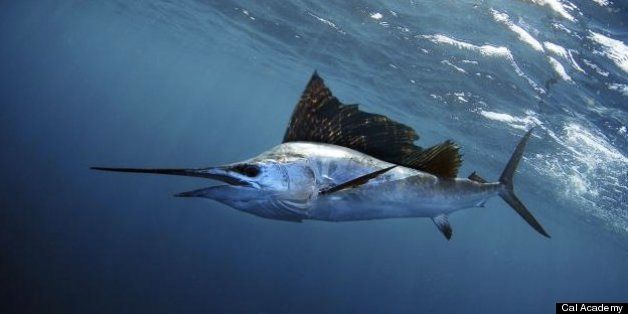
SAN FRANCISCO -- The skeleton of a killer whale that washed up on a West Marin beach over Thanksgiving weekend in 2011 is the star of a new exhibit that will open Friday at the Academy of Sciences.
Bones of the 18-foot orca are being pieced together and eventually the entire skeleton will be displayed in the museum as part of the new "Built For Speed" exhibit, which highlights fast fish.
The killer whale skeleton will be the only one of its ecotype on public display in the United States.
"The public will be able to see the whole process of articulating the skeleton," said Moe Flannery, collections manager at the academy. "It will take about 30 days to finish and then he will be hanging for the rest of the run of the exhibit until September, then it will be moved elsewhere in the academy."
The dramatic display of a killer whale skeleton is expected to draw crowds and offer the opportunity to provide information about the species.
"Having an orca, a high-level predator, and knowing about the threats that they face, is an important message to bring to the public," said Flannery, a former Bolinas resident. "Because orcas are the top predators they end up with a lot of (toxics) in their bodies."
Part of the exhibit highlights the amount of human-generated garbage that gets into the oceans. Artist Richard Lang of Forest Knolls used colored plastic that washed up at Kehoe Beach in West Marin to underscore the problem in
three displays.
"It was a lot of physical work to put these together," said Lang, noting teen volunteers did some of the labor. "We are addressing issues in the art which affect the oceans."
Plastic, Styrofoam and other junk make up the pieces, which Lang fashioned into art that is pleasing to the eye.
"All of this, all of the bottles, all the Styrofoam was found on the beach," Lang said.
The exhibit also features models of an Indo-Pacific sailfish, yellowfin tuna and shortfin mako shark, which have evolved into swift swimmers primarily to catch prey and outswim predators. The exhibit also features human ocean speed: a catamaran from Oracle Team USA, the America's Cup defending champions and academy partner.
A catamaran -- which tops out at about 45 mph -- can't hit the speeds of a sailfish, one of the world's fastest fishes. It has been clocked at 68 mph jumping out of the water, aided by a streamlined body, retractable dorsal fin, pointed bill and stiff, crescent-shaped tail. The yellowfin tuna is able to swim at more than 40 mph because of its torpedo-shaped body. The shortfin mako shark, the fastest known shark species, can reach speeds of more than 40 mph and has been recorded migrating up to 2,500 miles.
The orca is one of the world's fastest marine mammals, clocking in at a top speed of 30 mph. Speed aside, the killer whale from Point Reyes has turned out to be a boon for researchers.
Initially they were not sure what they had on their hands when the orca washed up on an isolated Driftwood Beach in the Point Reyes National Seashore. But once they realized the orca was one of the rarer types that has undergone little study, they jumped into action to save its skeletal remains.
Crews of up to 20 people worked to dissect the multi-ton mammal to extract its bones in December 2011. They had to work their way through massive amounts of blubber and muscle to get the job done.
Getting the bones off the isolated beach and up a steep bluff was not easy. Volunteers stuffed bones into backpacks and made the ascent. The skull was so heavy a stretcher was needed to get it out.
On-site researchers noticed the orca's teeth were worn down, a telltale sign of its diet: Pacific sleeper sharks, which have rough skin.
Originally thought to be a juvenile, biologists now believe the male orca was about 12 years old. Typically, the creatures have the lifespan of a human. The massive mammal had some head trauma, but a cause of death could not be determined.
There are three ecotypes of killer whales: "offshore," "transient" and "resident." The West Marin orca was the offshore type, and little is known about that type because the orcas tend to be active 20 to 30 miles offshore. When they die at sea their carcasses usually are scavenged and sink to the ocean floor.
"Now we are learning so much, including how to put a whale skeleton together," Flannery said. "I have only taken them apart."
Contact Mark Prado via email at mprado@marinij.com ___
(c)2013 The Marin Independent Journal (Novato, Calif.)
Visit The Marin Independent Journal (Novato, Calif.) at www.marinij.com
Distributed by MCT Information Services
